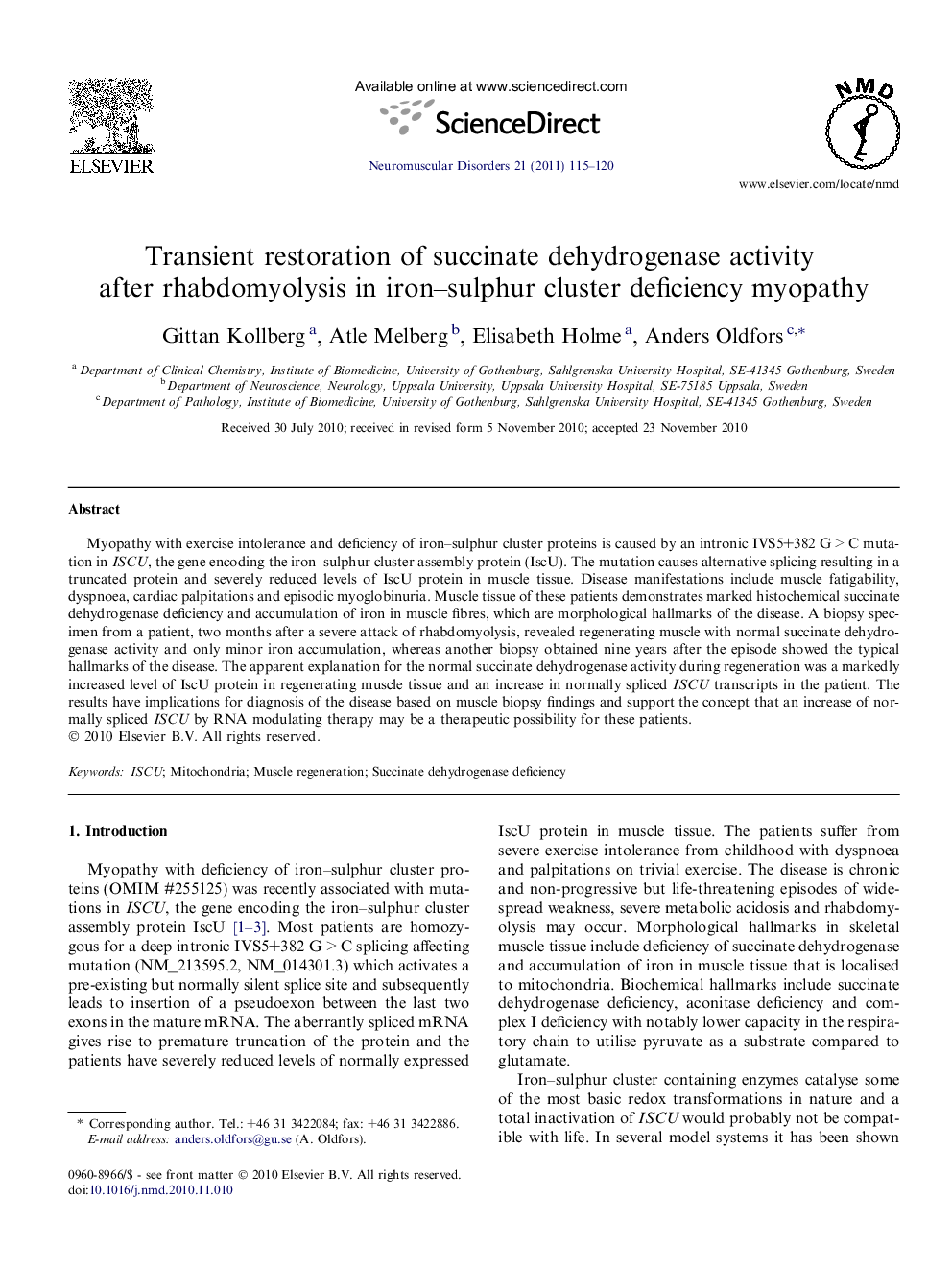| Article ID | Journal | Published Year | Pages | File Type |
|---|---|---|---|---|
| 3079829 | Neuromuscular Disorders | 2011 | 6 Pages |
Abstract
Myopathy with exercise intolerance and deficiency of iron-sulphur cluster proteins is caused by an intronic IVS5+382 GÂ >Â C mutation in ISCU, the gene encoding the iron-sulphur cluster assembly protein (IscU). The mutation causes alternative splicing resulting in a truncated protein and severely reduced levels of IscU protein in muscle tissue. Disease manifestations include muscle fatigability, dyspnoea, cardiac palpitations and episodic myoglobinuria. Muscle tissue of these patients demonstrates marked histochemical succinate dehydrogenase deficiency and accumulation of iron in muscle fibres, which are morphological hallmarks of the disease. A biopsy specimen from a patient, two months after a severe attack of rhabdomyolysis, revealed regenerating muscle with normal succinate dehydrogenase activity and only minor iron accumulation, whereas another biopsy obtained nine years after the episode showed the typical hallmarks of the disease. The apparent explanation for the normal succinate dehydrogenase activity during regeneration was a markedly increased level of IscU protein in regenerating muscle tissue and an increase in normally spliced ISCU transcripts in the patient. The results have implications for diagnosis of the disease based on muscle biopsy findings and support the concept that an increase of normally spliced ISCU by RNA modulating therapy may be a therapeutic possibility for these patients.
Keywords
Related Topics
Life Sciences
Neuroscience
Developmental Neuroscience
Authors
Gittan Kollberg, Atle Melberg, Elisabeth Holme, Anders Oldfors,
